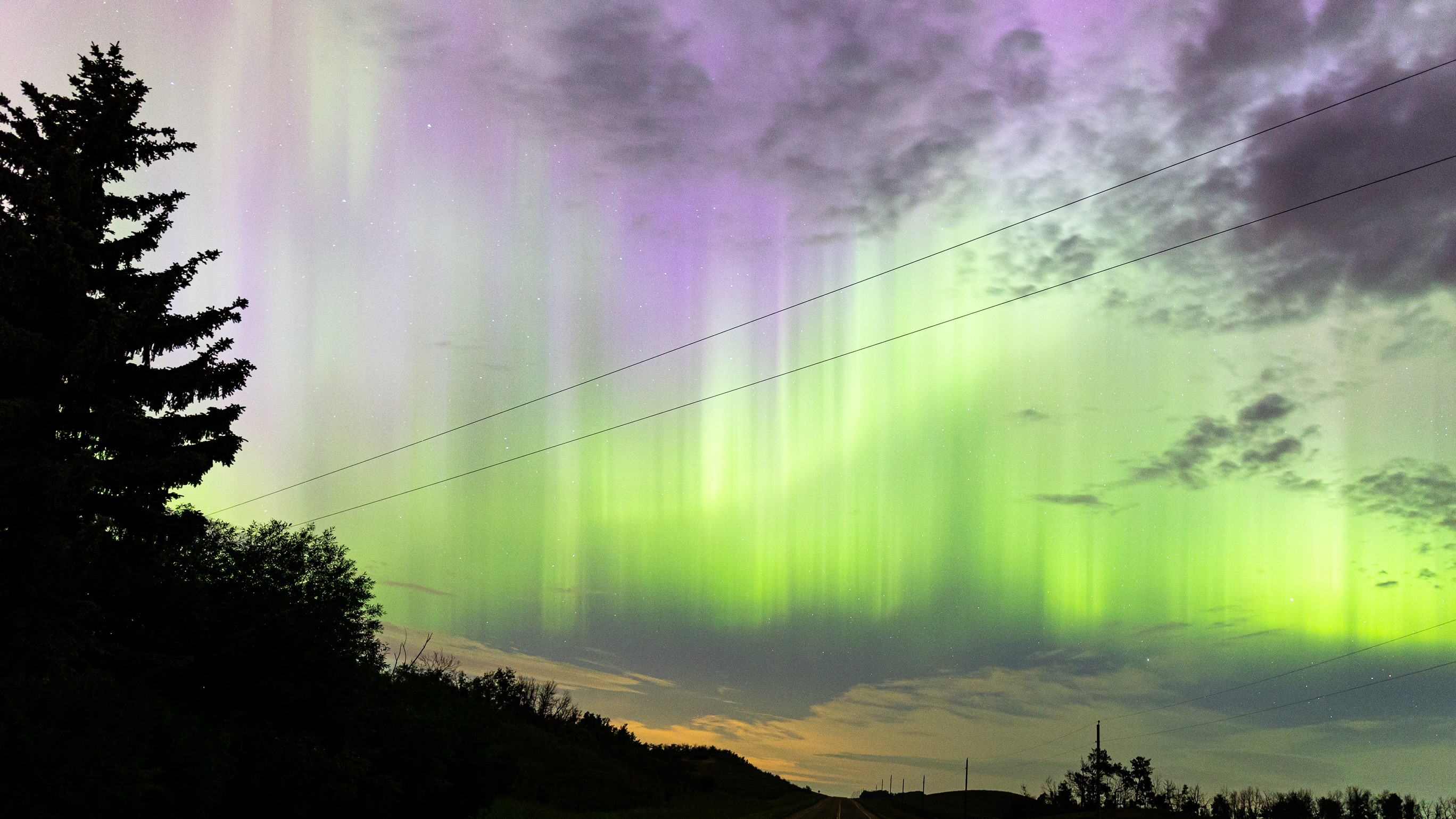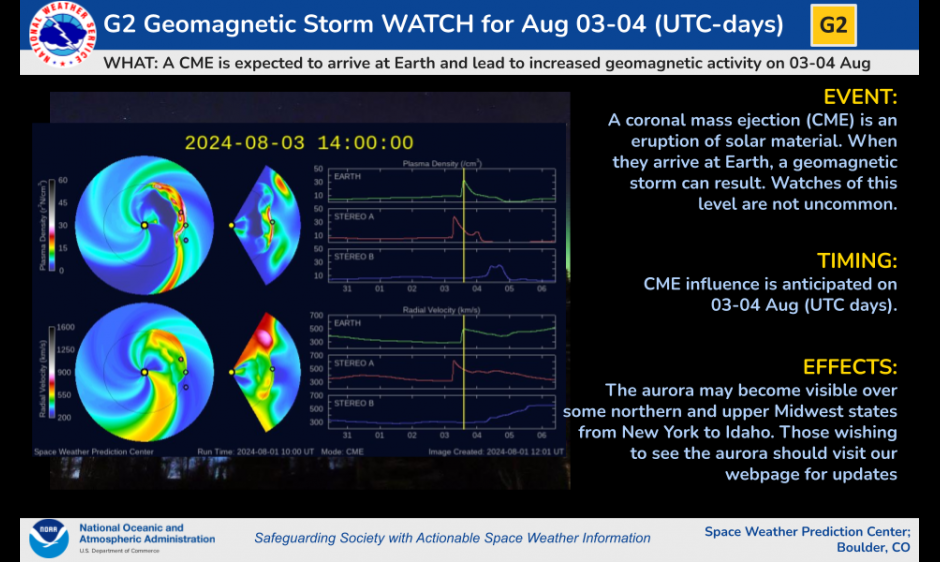Aurora alert: Moderate geomagnetic storm could bring northern lights as far south as New York this weekend
Geomagnetic storm conditions are predicted for Aug. 3 and Aug. 4.

The sun has been putting on quite a show this week, sparking impressive auroras across the U.S. and Canada, and it isn't finished yet.
Continued solar activity has prompted the National Oceanic and Atmospheric (NOAA) Space Weather Prediction Center (SWPC) to issue a geomagnetic storm warning for Aug. 3 and Aug. 4 which is great news for those wishing to see the northern lights.
The geomagnetic watch was issued in anticipation of the arrival of a coronal mass ejection (CME) associated with a powerful M.8-class solar flare that erupted from the sun on Aug. 1. If the predicted moderate G2 conditions are reached we could witness auroras as far south as New York and Idaho.
CMEs are expulsions of plasma and magnetic fields from the sun. They carry electrically charged atoms known as ions. When CMEs collide with Earth's magnetosphere, they can cause geomagnetic storms. During such storms, the ions interact with gases in Earth's atmosphere, emitting energy as light. This light display is called the northern lights, or aurora borealis, in the Northern Hemisphere, and the southern lights, or aurora australis, in the Southern Hemisphere.
NOAA classifies geomagnetic storms using a G-scale that measures their intensity, ranging from G1 for minor storms to G5 for the most extreme ones. Moderate G2 conditions are predicted for the weekend which means we could be in for quite the aurora show as the previous "minor" G1 conditions on July 29/30 sparked dazzling northern lights across the U.S. and Canada.
Similar to Earth's weather, space weather is unpredictable and challenging to forecast. Geomagnetic storm warnings are common, and sometimes, they amount to nothing. As the weekend approaches, space weather forecasters will have a clearer understanding of when, or if, the CME will arrive.
But remember, even if Earth is hit by the CME, depending on the magnetic field alignment within the CME it could connect with Earth's magnetosphere causing impressive northern lights displays or our planet could "close the door" on the CME, leaving aurora chasers in the dark. When checking out space weather data from resources such as Space Weather Live, keep an eye on the Interplanetary Magnetic Field (IMF), particularly the Bz value which is the north-south direction of the IMF. The Bz needs to be orientated southward for a successful connection to Earth's magnetosphere which points northward, according to Space Weather Live.
Breaking space news, the latest updates on rocket launches, skywatching events and more!
To keep up to date with the latest space weather alerts and forecast check out NOAA's Space Weather Prediction Center. I also recommend checking out space weather physicist Tamitha Skov's account on X and YouTube channel for detailed space weather reports and valuable aurora hunting information.
Editor's note: If you capture a stunning photo or video of the northern lights (or southern lights!) and want to share them with Space.com for a possible story, send images, comments on the view and your location, as well as use permissions to spacephotos@space.com.

Daisy Dobrijevic joined Space.com in February 2022 having previously worked for our sister publication All About Space magazine as a staff writer. Before joining us, Daisy completed an editorial internship with the BBC Sky at Night Magazine and worked at the National Space Centre in Leicester, U.K., where she enjoyed communicating space science to the public. In 2021, Daisy completed a PhD in plant physiology and also holds a Master's in Environmental Science, she is currently based in Nottingham, U.K. Daisy is passionate about all things space, with a penchant for solar activity and space weather. She has a strong interest in astrotourism and loves nothing more than a good northern lights chase!


